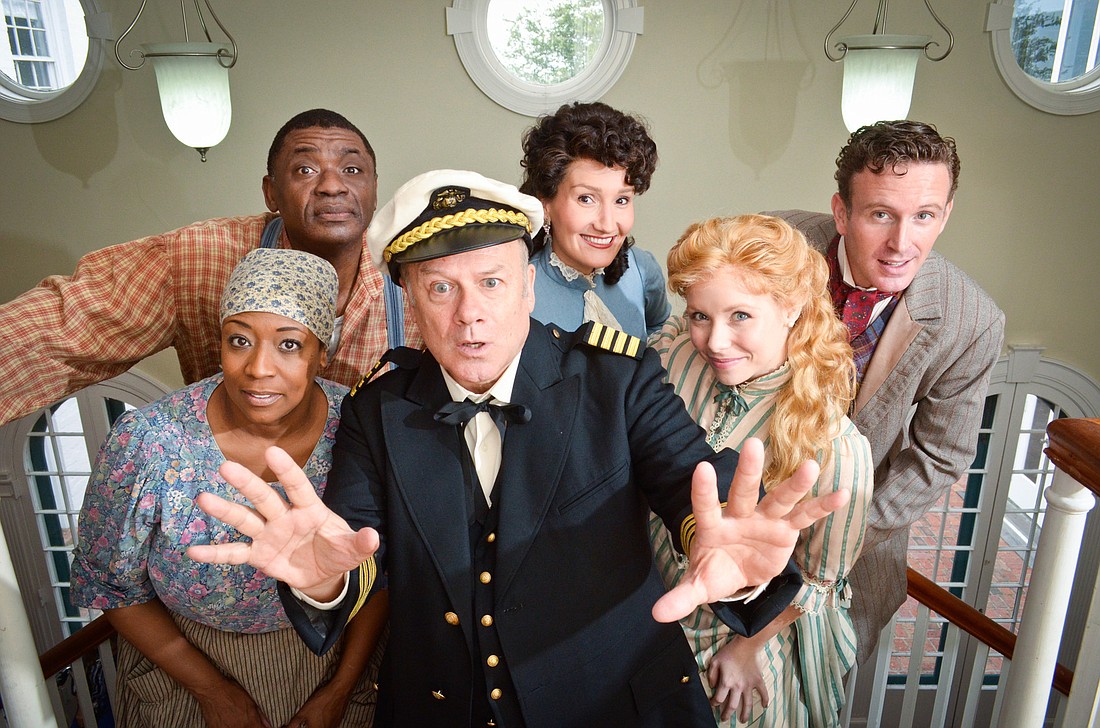- April 16, 2024
-
-
Loading

Loading

The vocal score for “Show Boat” ends with a huge choral ensemble followed by a double sforzando D major chord in the orchestra, and these words: “Curtain. End of Opera.” But, at the beginning of the score, it’s called “A Musical Play.” Whatever you call it, “Show Boat,” in the hands of Director Rob Ruggiero, with choreography by Noah Racey, new orchestrations by Dan Delange and music direction and conducting by F. Wade Russo, is a mega hit.
Jerome Kern, the composer, with book and (most) lyrics by Oscar Hammerstein II, originally had a show that ran about four hours. But that was back in 1927, and nothing like it had come before. This groundbreaking musical covered entirely new territory, not only because it was the first piece to have a book that carried its story through from beginning to end, but also because it was the first show to touch on race relations (eight years before “Porgy and Bess”), incorporate underscoring (the use of music under dialogue) and to use songs to further the plot.
Musically, it was a prediction of things to come. Suddenly, audiences were faced with an American musical that wasn’t a grouping of musical numbers strung together by a flimsy plot. It was European operetta, American-style, leading the way as the benchmark for future American musical theater productions, from “Oklahoma” and “South Pacific,” to “Hair” and “Into the Woods.”
The Asolo has done away with the stage bloat expected by audiences of the 1920s and trimmed it down to its essentials: great songs that enhance the theatricality and emotion of the play. Four hours have become less than two-and-a-half, and they absolutely fly by.
Elisa Van Duyne, as Ellie May Chipley, is a charming cross between Celeste Holm and Lucille Ball, and Denis Lambert in the role of her husband and comedy partner, Frank Schultz, is the perfect song-and-dance man — he proves timing is everything, from comic relief to the old soft shoe. Their performance of “Goodbye My Lady Love,” one of two old-time hits interpolated into the Trocadero Nightclub scene in Act II, is an astonishing example of how to dance and sing while keeping a character firmly in one’s grasp.
Daniella Dalli, in the role of Julie LaVerne, positively shines as an actress with the voice of a torch singer, able to seamlessly incorporate the soul of Julie into the sound of her singing. Her “Can’t Help Lovin’ Dat Man” in the first act and “Bill” in the second (written, by the way, 10 years earlier for the show “Oh Lady! Lady!!” by P.G. Wodehouse and Kern and then interpolated into “Show Boat”) were steaming hot, sung with a dusky bottom register that hints of whiskey times ahead.
Magnolia and Gaylord, sung by Marissa McGowan and Ben Davis, were the fine romantic leads. McGowan, whose voice has just the right touch of the operatic tradition needed to sing “After the Ball” (another old song included at the Trocadero) mixed with the Broadway shimmer necessary in a ragged up version of “Can’t Help Lovin’ Dat Man,” was a perfect match for Davis, a real baritenor whose singing and style harken back to the great days of John Raitt in “Carousel.” Their duets, “Only Make Believe,” “You Are Love” and “Why Do I Love You,” were romantic and heartbreakingly beautiful.
Michael James Leslie’s Joe was the glue that held the show together, dramatically and musically. We’re used to hearing “Ol’ Man River” sung by a booming, operatic bass but Leslie’s Joe was so much more. Although his voice is buttery smooth with a tinge of Al Jolson’s quiver, he used his sound to enhance his character so, when he’d appear — on stage, in the aisles, in a balcony box — he hovered like the show’s guardian angel. E. Faye Butler’s Queenie, Joe’s ever-loving, ever-exasperated wife, was the perfect foil, and their hilarious duet, “I Still Suits Me,” was filled with good humor, love and warmth.
What makes the Asolo’s production a musical groundbreaker is how beautifully it’s been cut and honed into a “Show Boat” that’s lean and pure; a “Show Boat” that shows off the great music Kern wrote while using it to propel a plot that Hammerstein would probably applaud were he here today. It’s the “Show Boat” that will float in our hearts and heads for years to come.